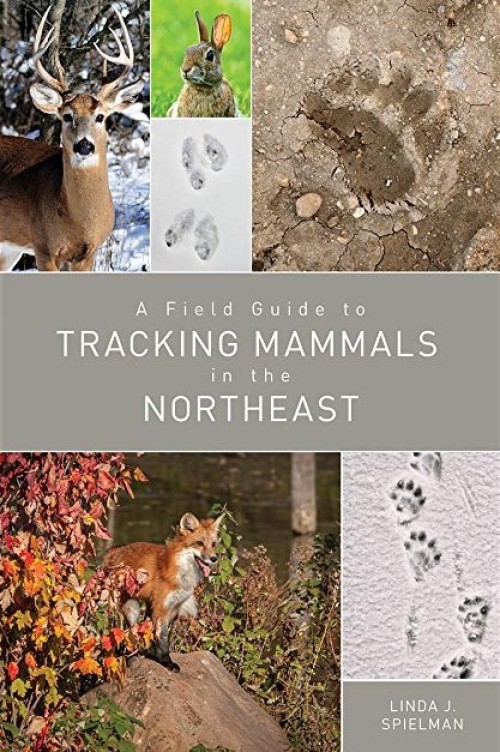by Linda Spielman
Countryman Press, 2017
With so many good tracking books already available, you might think that all has been said on the topic. But Linda Spielman’s new addition to the field, A Field Guide to Tracking Mammals in the Northeast, offers a unique and important emphasis: the fact that “real tracks frequently deviate from perfect tracks,” and therefore, they “may appear like the tracks of a completely different animal.”
The 20-page introduction sets the stage and should be perused because Spielman’s nomenclature for track morphology and methods of measuring tracks and trail parameters differ slightly from those used in some other books.
The best part of the introduction is her discussion of how an animal’s movement relates to its trail pattern, which she explains for each of five basic gaits: walk, trot, bound, lope, and gallop. Her descriptions may be the clearest I’ve seen.
In the “species” chapters, Spielman uses her own illustrations to show variations of front and hind tracks for 40 species of mammal in the Northeast. The use of illustrations rather than photos is an interesting choice. Trackers are divided on which approach is more visually effective. (Yes, I surveyed my colleagues on that point!)
Some prefer drawings because the artist has the freedom to emphasize nuances and to “average” the appearance to create “perfect” tracks, which are rarely found in nature. Others prefer photos of actual tracks because they provide context, such as substrate and lighting, allowing one to appreciate the impact of environmental factors. Many say that a combination of both illustrations and photos would be ideal in a tracking book.
To a degree, Spielman satisfies everyone because she provides drawings of several variations of tracks for each species, both perfect and imperfect. In the text, she describes the conditions under which the variations may occur, and how to distinguish them from the similar tracks of other animals. Nevertheless, the substrate cannot be seen in the illustrations, and searching for the description of the impact of substrate and other factors in the text can be a bit cumbersome. For those with a strong preference for photos, this book may fall short.
Trail patterns, scat, habitat, and range are also provided for each species. Gaits used by each species, and the conditions under which they are used, are discussed, and the resulting trail patterns are illustrated. An illustration of the typical scat is provided for each species, with an average, range, or maximum diameter given, and a verbal description of common scat contents and other variations in appearance. The habitat descriptions are brief, and each animal’s geographic range is described in words rather than depicted on a map.
Compared to other popular tracking books, there is more emphasis and clarity on the finer details of track and trail identification and less on scat identification. Other types of sign, such as runs, feeding sign, and dens, are mentioned briefly or not covered.
If I could make a few changes to improve its utility, I would have a small picture of each animal and a map of its range in the Northeast. There seems to be enough head space to fit them in at the start of each species account, so it wouldn’t increase the heft of the book. These additions would be especially helpful for beginners, who already benefit because the thrust of the book – that variation is the rule rather than the exception – is an important one for newbies, who all-too-often take guidelines as rigid rules.
Overall, A Field Guide to Tracking Mammals in the Northeast is an excellent field guide for those who like learning from illustrations and who strive for a deep understanding of tracks and trails. It’s appropriate for trackers of most levels. And, at 192 pages and measuring six inches by nine, it really is small and light enough to carry around in the field.


